Scorn poles & rock mares
– and other curious objects

The pillories, where the neck and the wrists (and sometimes the ankles) were locked in some contrivance, were never common in this country. Here a common punishment contraption was called a "gapestokk", which can be translated as "scorn pole". An iron collar with a chain secured the person to be punished to the pole. Most wooden poles have now turned into earth, but a few rock ones are left. This one stands in Tingvoll (east of Kristiansund), at the road to the church. Usually these scorn poles were placed close to the church, but this one stands one kilometres away. It might have been moved from the church when the use became forbidden in 1848, but nobody knows whether that one was made from stone or wood. This one might also be a fake. Bekken, where it stands, was then a guesthouse where people might get drunk, and a source of funny jokes would be good advertising.
(2015-09-01)
The scorn poles were mostly used for punishing less serious crime, typically premarital sex and being unable to pay a fine. We also get the impression that usually the culprit was confined to the pole when the congregation entered the church and set free when everybody had left the church and passed by. We don't know when the use of the scorn poles started, but they were in use during the seventeenth and eighteenth century. The last use in this country was in 1840.
("Scorn pole" is also a common translation of "níðstöng", now best known from Iceland. This is a pole with a horse head on top, pointing at the object or person(s) to be scorned. Or cursed. Well, the modern Icelandic version might use e.g. a sheep head or a cod head; it's cheaper.)
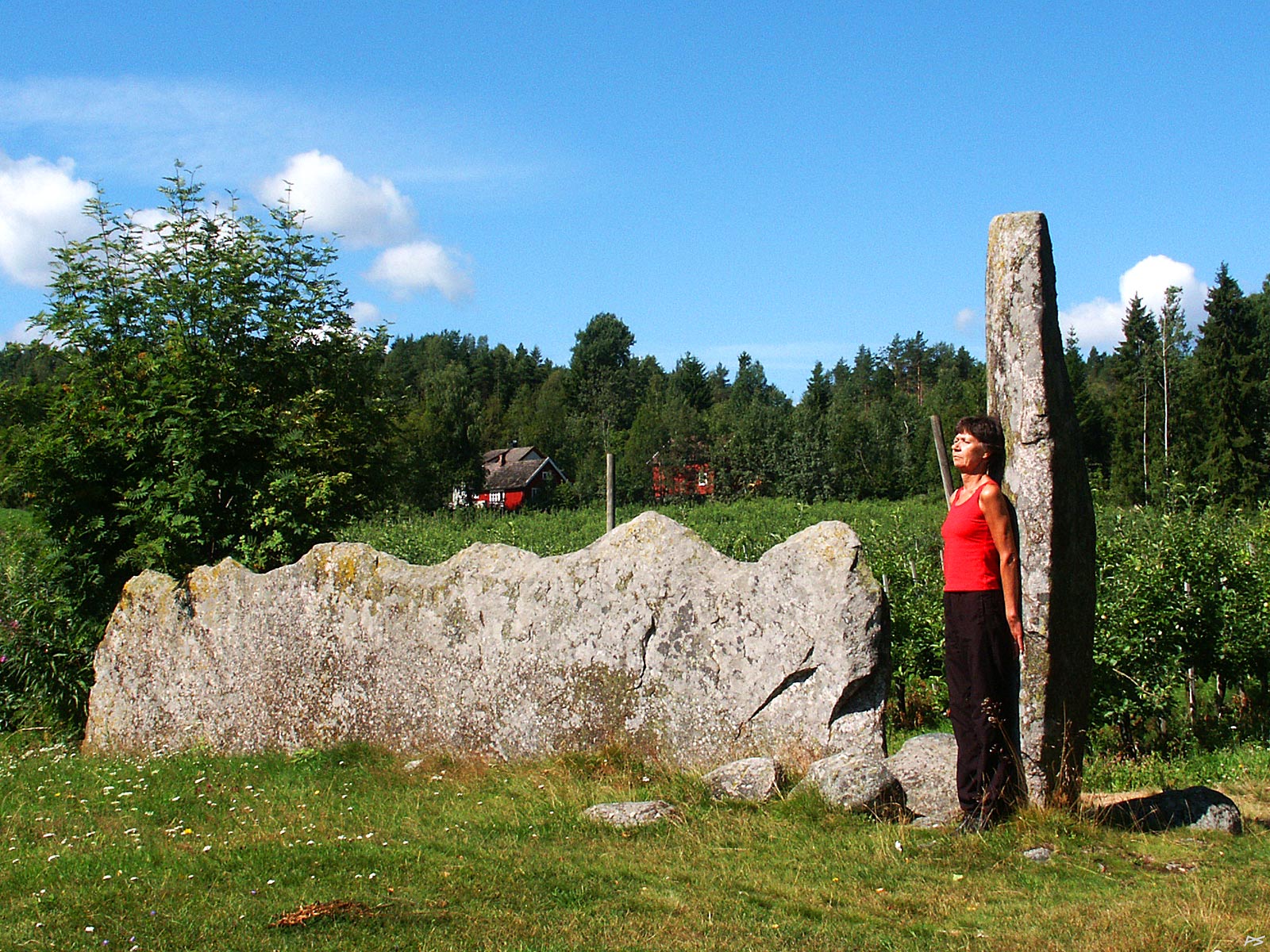
In some places there was a worse punishment contrivance, the rock or wooden "mare". This picture probably shows the most impressive rock mare left. It used to stand at the Gårahaug church in Bø, Telemark, but the church was demolished in the 1850s. The persons to be punished were placed astride the "mare" and weights may have been tied to their feet. Here seems to be "saddles" for five persons. The vertical rock pillar may be a monument of the old church (without inscriptions) or a scorn pole, nobody seems to know.
(2005-08-02)
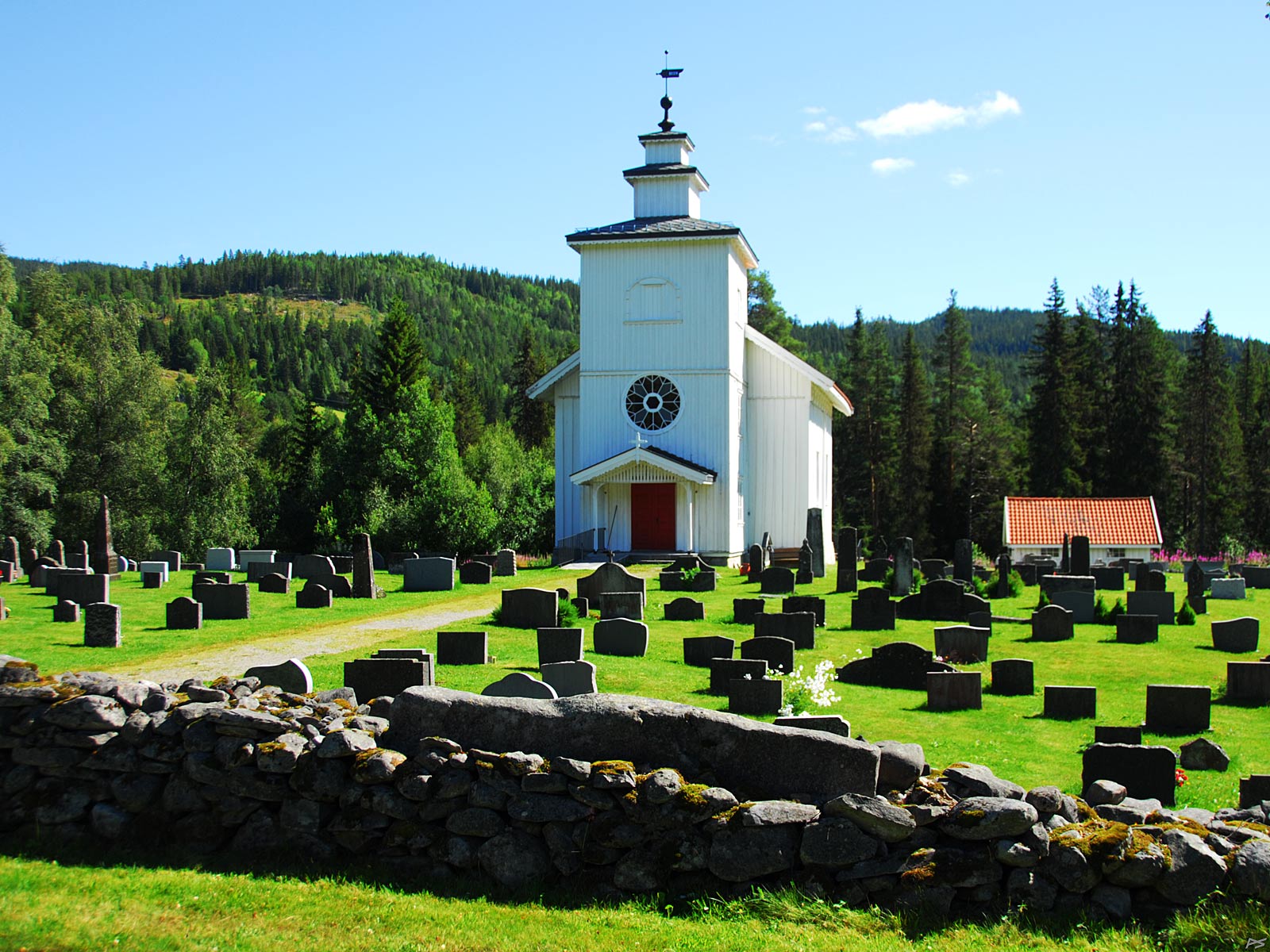
Another church in Telemark, the Skafså church just south of Dalen. In 1839 it replaced an old stave church. We don't know what elongated stone in the rock fence is, but read on...
(2015-08-12)
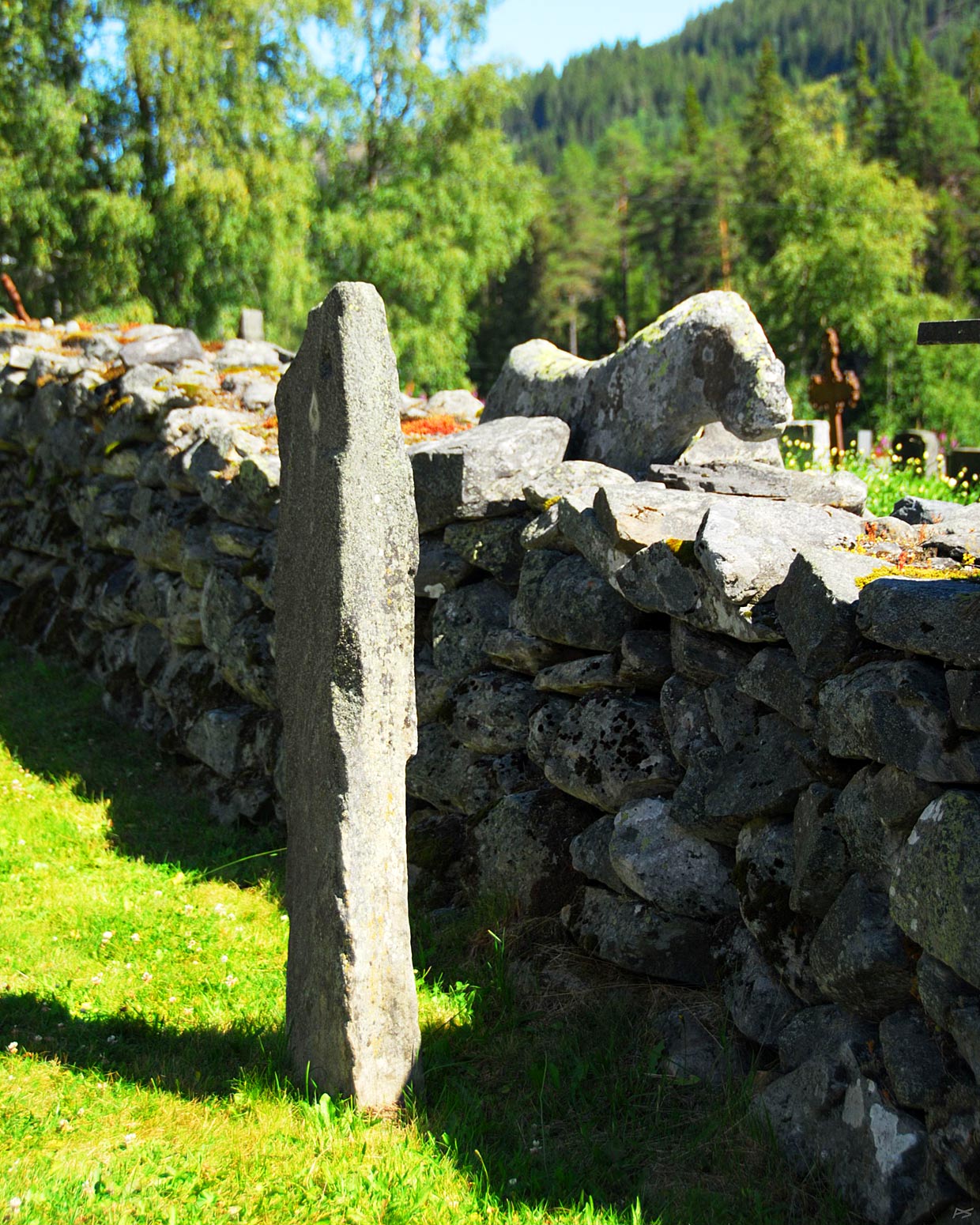
On the other side (left) of the gate stands a rock scorn pole, a hole is drilled through it near its top. And built into the stone fence an almost natural looking rock mare can be seen. Its legs are rather short, so it must have been placed on top of something else to be useful. Compared with the Gårahaug rock mare (above) it seems quite pleasant to ride.
(2015-08-12)
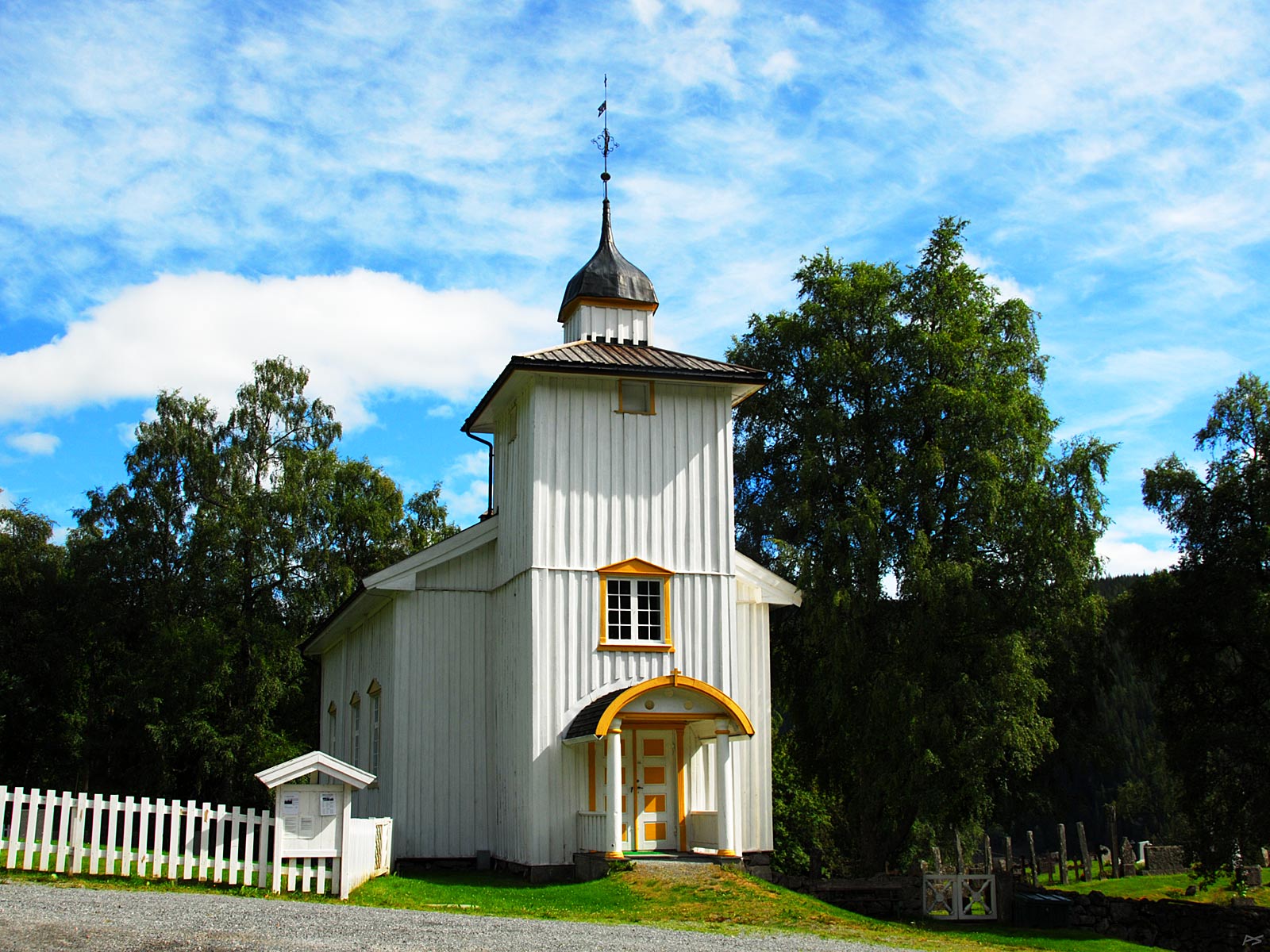
The Nesland church: Starting at the Skafså church and driving a few kilometres on the steep and winding road down to Dalen, then continuing northwards (on route 38) maybe 15 kilometres on a steep and winding road up from Dalen, you reach the Nesland church.
(2015-08-12)

At a corner of the church stands a scorn pole. It obviously stood at the old stave church that was built in 1242 and torn down in 1847 when this new church was built.
(2015-08-12)
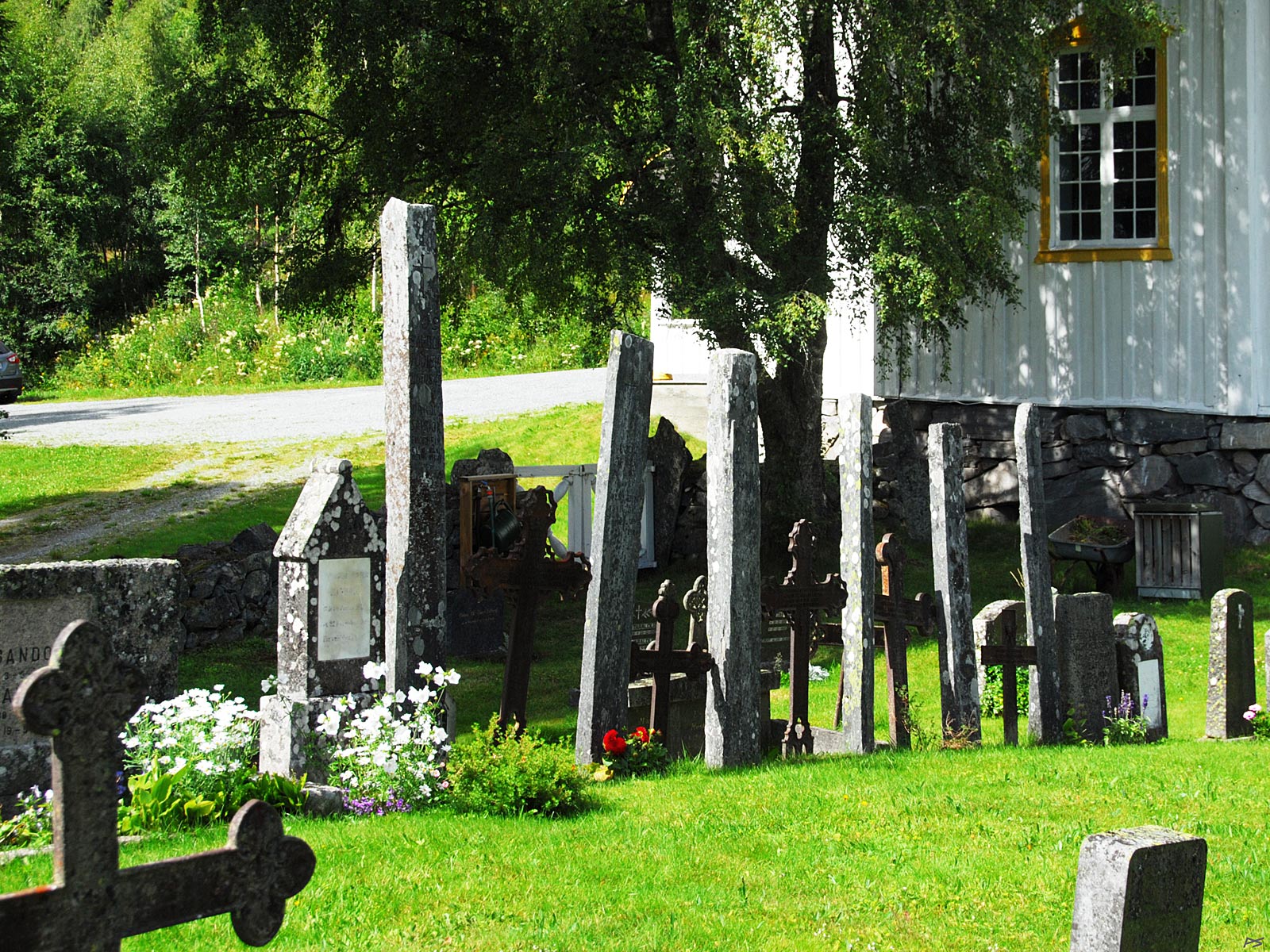
Still at the Nesland church. No, those are not scorn poles, they are old and rather special grave monuments.
(2015-08-12)
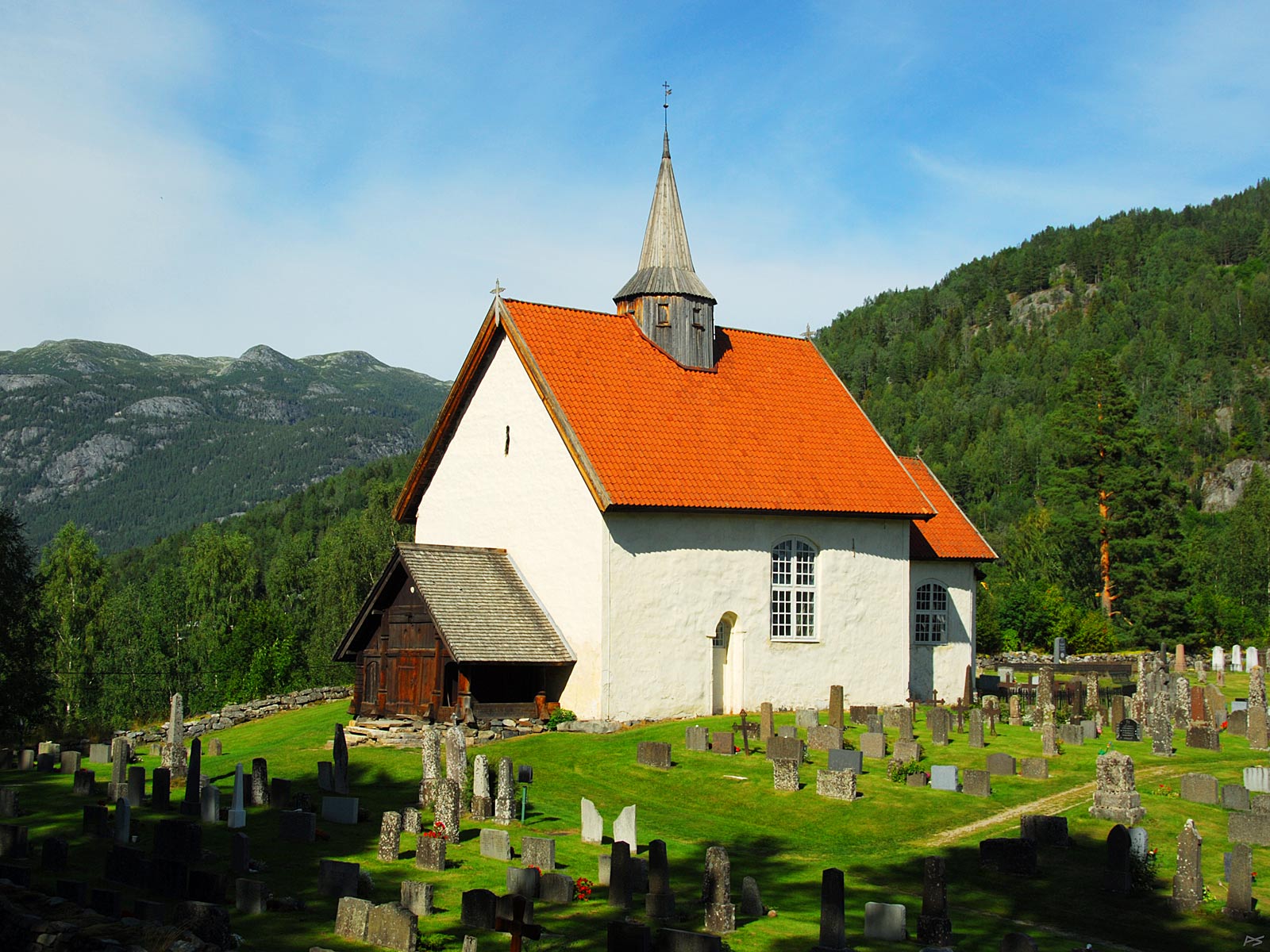
Continuing eastwards, we arrive in Seljord, the only place in Norway featuring an invisible tourist attraction (a sea serpent in the Seljord lake). This is the Seljord church, dating back to 1180.
(2015-08-12)
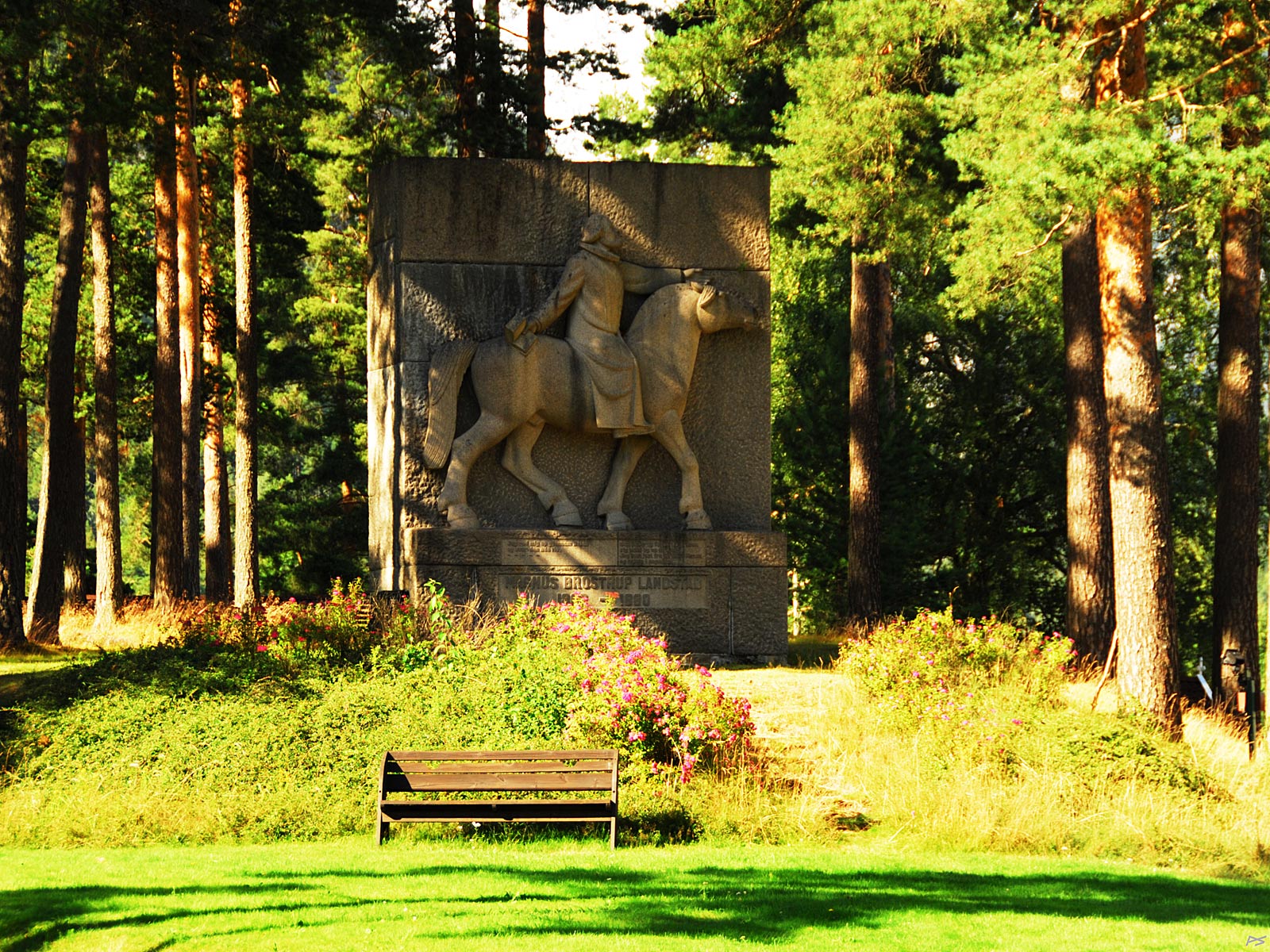
There isn't any scorn pole at the Seljord church these days, but this is Tremerrhaugen (=the Wooden Mare Hummock) only a few meters away. Evidently a wooden mare once stood here. It would have changed to earth long ago, so raising this monument in its place is okay. After all, it honours the most prominent psalm poet in this country, Magnus Brostrup Landstad (1802–1880), priest in Seljord 1839–1849 and an important folklore collector.
(2015-08-12)
